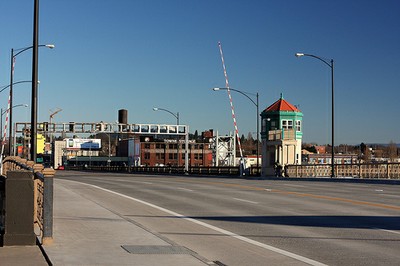
Via Todd Litman of the Victoria Transport Policy Institute, two interesting studies on how drivers have reacted to the rising cost of taking to the roads.
First up, a study (pdf link) that used 2.1 million odometer readings in California to explore the relationship between fuel prices and driving. From the abstract:
The primary empirical result is a medium-term estimate of the utilization elasticity of driving—the elasticity of vehicle-miles-traveled with respect to gasoline price—in the range of -0.15 to -0.20…Further analysis indicates that there is considerable heterogeneity in this elasticity, both geographically and across income and vehicle types.
In non-econ-speak, that means that every 10 percent increase in fuel costs decreased driving by about 2 percent.
But locale, vehicle type, and income all influenced drivers’ responses to high prices. In urban and suburban areas, the mileage logged in SUVs and pickups plummeted when gas prices went up—but the declines were less noticeable for smaller, more efficient cars. (This suggests, among other things, that folks with access to more than one vehicle tend to drive the more efficient one more when gas prices rise.) However, SUV and pickup drivers from low-income rural areas weren’t nearly as responsive to gas prices—perhaps because they have fewer kinds of vehicles to choose from, and less flexibility in how much they travel.
Second, there’s this study that found that drivers are much more responsive to permanent changes in gas prices (i.e., gas taxes) than to temporary ones (i.e., swings in market prices). From the article:
A one-dollar increase in tax-exclusive gasoline prices would increase the average mpg of new vehicles sold by only 3.6%, [but] the same increase in gasoline taxes would increase the average mpg of new vehicles by 47.7%.
Their results suggest that drivers shrug off market price swings, but pay close attention to taxes. Of course, the data that underpin these results came from 1999 to 2006—so it’s hard to know whether the recent spikes in gas prices over the last few years have changed things. Do drivers now think of high gas prices as more than a temporary blip? Maybe so, but this study can’t tell us.
Regardless, I can’t help wondering if other “permanent” increases in the cost of driving—such as the tolls that are currently being planned or proposed in various parts of the Northwest, or increases in parking costs—might also put the brakes on people’s driving habits.
Photo credit: Burnside, empty. / Gary A. K. / CC BY-NC-SA 2.0

Comments are closed.